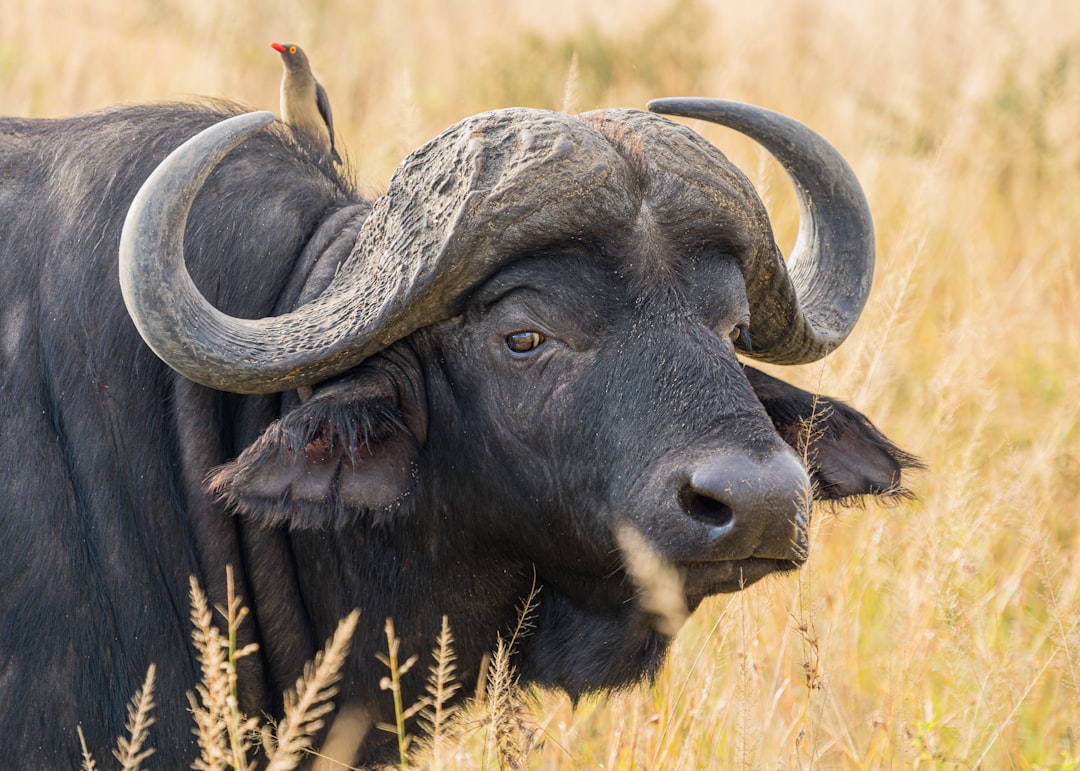Buffalo vs. Cow
What's the Difference?
Buffalo and cows are both large, herbivorous mammals that belong to the Bovidae family. However, there are some notable differences between the two. Buffalo are typically larger and more robust than cows, with a hump on their back and a broader head. They are known for their impressive horns, which can be curved or straight depending on the species. Cows, on the other hand, have a more streamlined body shape and a narrower head. They usually have shorter and more curved horns compared to buffalo. While both animals are domesticated for their meat and milk, buffalo are often associated with wild and untamed landscapes, while cows are commonly found in agricultural settings.
Comparison

| Attribute | Buffalo | Cow |
|---|---|---|
| Scientific Name | Bubalus bubalis | Bos taurus |
| Family | Bovidae | Bovidae |
| Genus | Bubalus | Bos |
| Origin | Asia | Europe |
| Size | Larger | Smaller |
| Weight | Heavier | Lighter |
| Horns | Curved and large | Straight and smaller |
| Color | Dark brown or black | Various colors |
| Domestication | Domesticated | Domesticated |
| Uses | Milk, meat, and labor | Milk, meat, and labor |

Further Detail
Introduction
Buffalo and cow are two of the most common domesticated animals found around the world. While they both belong to the Bovidae family, they have distinct characteristics and attributes that set them apart. In this article, we will explore and compare the various aspects of buffalo and cow, including their physical appearance, behavior, diet, and economic significance.
Physical Appearance
Buffalo and cow differ significantly in their physical appearance. Buffaloes are generally larger and more robust than cows. They have a hump on their back, which is absent in cows. The horns of buffaloes are also larger and curved, while cows typically have straighter and shorter horns. Additionally, buffaloes have a shaggy coat of hair, which helps protect them from extreme weather conditions, whereas cows have a smoother and shorter coat.
Behavior
When it comes to behavior, buffaloes and cows exhibit distinct characteristics. Buffaloes are known for their strong herding instincts and tend to stay together in groups. They are also more aggressive and protective of their young ones, often displaying defensive behavior when threatened. On the other hand, cows are generally more docile and calm. They are known to form strong bonds with their human caretakers and can be easily trained.
Diet
Buffaloes and cows have different dietary preferences. Buffaloes are primarily grazers and prefer to feed on grass and other vegetation found in open pastures. They have a unique ability to consume coarse and fibrous grasses, which makes them well-suited for grazing in areas with limited food resources. On the other hand, cows are also grazers but have a more diverse diet. They can consume a wider range of plants, including legumes and shrubs, making them adaptable to various environments.
Economic Significance
Both buffalo and cow have significant economic importance in various parts of the world. Buffaloes are particularly valued for their milk production. Buffalo milk is known for its high fat content and is commonly used to make dairy products such as cheese, butter, and yogurt. In some regions, buffalo meat is also consumed and considered a delicacy. Cows, on the other hand, are primarily raised for their milk, meat, and leather. Cow milk is widely consumed globally, and beef is a staple in many diets. Additionally, cowhide is used for making leather products, including shoes, bags, and belts.
Environmental Adaptability
Buffaloes and cows have different levels of adaptability to various environmental conditions. Buffaloes are well-suited for hot and humid climates, as they have a higher tolerance for heat and can withstand prolonged exposure to sunlight. They are often found in tropical and subtropical regions. Cows, on the other hand, have a broader range of adaptability and can thrive in diverse climates, including cold and mountainous regions. This adaptability has contributed to the widespread distribution of cows across different continents.
Conclusion
In conclusion, while buffalo and cow belong to the same family, they have distinct attributes that differentiate them from each other. Buffaloes are larger, more aggressive, and better adapted to hot climates, while cows are generally more docile, adaptable, and have a broader dietary range. Both animals have significant economic importance, with buffaloes being valued for their milk and meat, and cows for their milk, meat, and leather. Understanding the unique characteristics of these animals helps us appreciate their role in agriculture and their impact on human societies worldwide.
Comparisons may contain inaccurate information about people, places, or facts. Please report any issues.